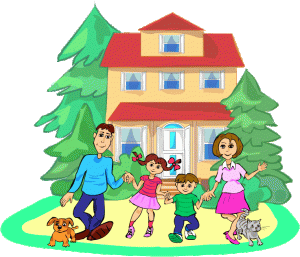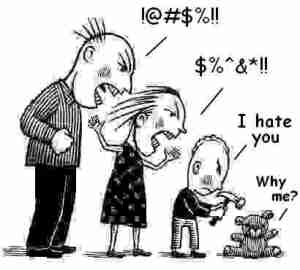
This is my latest research for a written assignment I completed for my Infant & Toddler Development course. I thoroughly explain the dangers of drinking alcohol while pregnant. I honestly believe it is not that difficult to wait 9 months to have a cocktail. Think before you act Mommies…
Fetal alcohol syndrome has caused devastating effects in children, causing abnormalities in brain functioning. This includes, but not limited to, activity that’s associated with transferring messages from one side of the brain to another (Berk, page 109, 2012). As a child with FAS becomes of age to attend school, they tend to have poor motor coordination, and difficulties processing information. In many cases, this means extremely hard times for these children, as they exhibit poor performances in their studies. Couples that wish to be parents, or at least mothers expecting should avoid drinking alcohol completely (Berk, 2012).
The following studies confirm the long-term effects FAS has on school children. It is with hopes that those planning a pregnancy will not only take this information seriously, but utilize it when faced with the decision of whether or not they should have a drink while pregnant.
Abusing alcohol is a dangerous habit, but when a mother is drinking for two, it does pose additional risks to her unborn baby. According to a PubMed Health article on ‘Fetal Alcohol Syndrome’, when a pregnant woman drinks, the alcohol easily passes across the placenta to the fetus. With reports of 25 percent of U.S. mothers drinking during their pregnancies, it is more likely that there are many children out there whom are diagnosed with developmental disorders as a result (Berk, 2012 page 109).
Alcohol is one of the many teratogens that can cause damage to a child during a prenatal period. Table 3.4 on page 109 in the Berk text shows that children with fetal alcohol spectrum disorder are given one of three diagnoses: fetal alcohol syndrome (FAS), partial fetal alcohol syndrome (p-FAS), or alcohol-related neurodevelopmental disorder (ARND). These diagnoses differ in the severity of symptoms such as: slow physical growth, brain injury, and some, if not all three of these facial abnormalities—short eyelid openings, a thin upper lip, and smooth or flattened philtrum. The diagnostic p-FAS contain two facial abnormalities and some brain injury. ARND only contains some brain injury, and FAS, the most serious of the three diagnoses, contains slow physical growth, some brain injury, and all three facial abnormalities (Berk, 2012).
The brain injury which results from FAS can affect areas of functioning that are imperative for children that are trying to learn—for example, memory, delayed language development, poor attention span, difficulties planning and reasoning, poor motor coordination, and minimal social skills (Berk, 2012).
But why exactly are children so affected by exposure to alcohol while in the womb?
A journal from the Fetal Alcohol Disorders Society explained how FAS children may have learning disabilities in these four areas: input of information, integration, memory, and output, all of which are crucial for completing simple tasks.
A case study proves that a child with FAS having difficulties processing and outputting is quite normal. For instance, let’s say a child is asked to transfer toys from the living room into the toy box in her bedroom. The expected behavior of this child would be to either: go into the bedroom and forget what to do, or go into the living room and arrange the cushions on the couch.
These actions of a FAS child are the result of changes to the central nervous system. A study was conducted at UW-Madison where they exposed a chick embryo to alcohol.
“We found that calcium released by alcohol has an immediate and devastating effect on certain neurological cells,” says Susan Smith, a professor of nutritional sciences in UW-Madison’s College of Agricultural and Life Sciences. “In this study we show clearly the source and the target of the calcium, and we also show that the pathways of cell death overlap with some of the pathways that give the addictive and rewarding properties of alcohol.”
The finding that alcohol acts through similar pathways to both kill embryonic cells and affect adult brain function suggests that researchers may be able to predict how alcohol will affect neurons, Smith says. And she adds, “The shared signaling is consistent with concerns that prenatal alcohol exposure could increase a person’s desire for alcohol rewards later in life.” (UW- Madison News, 2005).
The researchers examined the embryos under a microscope thoroughly to observe how the calcium released by the alcohol affected the developing neurological tissue.
“We immediately saw a flood of calcium, and within the first second we saw that certain brain cells were affected, and died shortly afterward – and those cells are not regenerated. It only took one dose of about .3 percent alcohol, which by human standards is high but achievable, especially for alcoholics,” explains Garic-Stankovic (UW- Madison News, 2005).
According to the UW-Madison, fetal alcohol syndrome is even more common than Down’s syndrome or cerebral palsy. FAS is the leading cause of mental retardation in much of the world, occurring two to three times in every thousand live births in the United States (UW- Madison News, 2005).
Recent research also implies that if an unborn child is exposed repeatedly to even low amounts of alcohol, problems can still occur. This includes issues regarding learning, judgment, and attention disorders—many of which are unrecognizable until the child is four or five years old (UW- Madison News, 2005).
Thankfully, there are teaching tactics to help the development of children with FAS. For example, strategies such as visual cues may enhance language development, rhyme and music for memory and integration, scripted plays to exercise social skills, and the use of videotapes to instruct certain concepts (Fall, 1991).
Although treatment for these children is available, it should be absolutely necessary for pregnant women to be educated on the genetic and environmental consequences that result from drinking alcohol during the prenatal period. Hopefully if they become aware of these long-term effects, it could possibly cause a decline in mothers choosing to drink while expecting.
Sources:
UW-Madison News, S. S. (2005, August 9). Study suggests broader damage from fetal alcohol syndrome. Retrieved from http://www.news.wisc.edu/11394
Fall, D. (1991). A.d.a.m. medical encyclopedia.. Retrieved from http://www.faslink.org/j.htm
Vorvick, L. J. (2011, August 15). Pubmed health. Retrieved from http://www.ncbi.nlm.nih.gov/pubmedhealth/PMH0001909/
Tags: babies, drinking while pregnant, FAS, Fetal alcohol syndrome, moms, parents, pregnant








